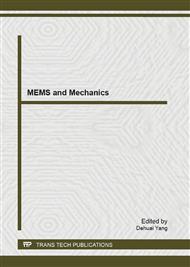p.203
p.209
p.216
p.223
p.228
p.237
p.241
p.248
p.253
The Experimental and Numerical Investigation on the Mechanical Properties of Metallic Foil
Abstract:
Micro-metal forming is a promising technology for the manufacturing micro parts of MEMS and MST, and the mechanical behavior of material at the micron scale need to be further explored. In this work, the mechanical properties of AISI304 stainless steel foils are investigated by the micro-tensile experiments and numerical prediction. The foils with different thicknesses (10, 50, 100 and 200μm) underwent different annealing treatments to obtain different grain sizes. The micro-tensile results show the obvious dependence of the mechanical behaviors on the grain size and thickness. Corresponding, a dislocation density based constitutive model which takes into account of the different strengthening mechanisms of grain boundary and surface passivation layer, is developed. The predicted results of the model show good agreement with the experimental data. The model interprets that the surface passivation layer and grain size play an important role in the overall mechanical behaviors of the micron metallic foils.
Info:
Periodical:
Pages:
228-233
Citation:
Online since:
June 2013
Authors:
Price:
Сopyright:
© 2013 Trans Tech Publications Ltd. All Rights Reserved
Share:
Citation:


